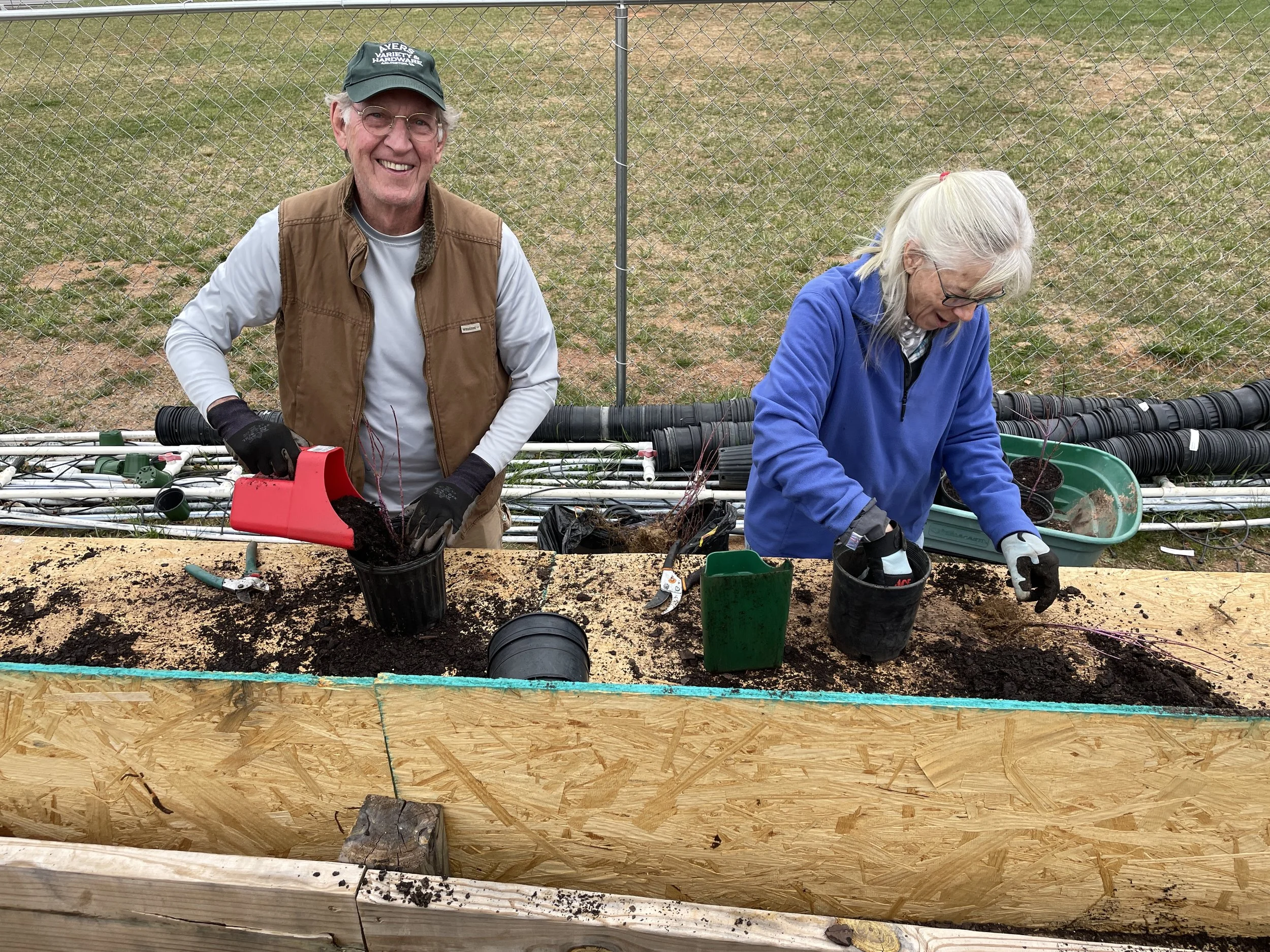2022 Urban Forestry Heroes
Taking Action, Again and Again, to Restore Our Urban Tree Canopy
Mary Pat and Tom plant seedlings during a nursery workday.
We've got so many reasons to give thanks! In each of our program areas, we see ordinary people taking heroic action to protect our home from the pressures of a changing climate.
This year-end, we're highlighting stories that inspired us and sharing how we're planting seeds to create a climate-resilient future for all of us.
Luckily, we're not alone on this journey! A group of anonymous donors has offered a $50,000 match on donations made before December 31.
Through Dec 31, every dollar you give does 2X more — thanks to a $50,000 match!
When we discovered nearly 100 identical-looking silver maple and red maple seedlings had gotten mixed up, Mary Pat didn’t shake her head and wave goodbye for the day.
She opened her plant identification app and dove in.
These seedlings had already been adopted, but they couldn't be welcomed into their new homes in Buncombe County backyards until volunteers knew which trees to give to whom.
It took many hours of careful work over several days to make sure that all these seedlings ended up labeled correctly, but Mary Pat was going to make sure they were ready for our tree adoption event on time.
“Climate change is one of the issues we’re really concerned about. For us, being TreeKeepers is a way we can do something that makes a difference,” Mary Pat said.
"It’s important to help out."
Mary Pat and her husband Tom are our 2022 Urban Forestry Heroes for their willingness to take action to create a climate-resilient future for our community.
Mary Pat and Tom lived abroad for years, and landed in North Asheville when they moved back. Questions about how to care for the trees on their own property prompted them to get involved with the GreenWorks Sand Hill Tree Nursery and the TreeKeeper program.
Tom told us they learned a lot during their TreeKeeper training—enough to plant 19 new native trees on their property and remove some harmful nonnatives (looking at you, Bradford Pear).
Then they just kept taking action, coming back again and again for every new workday or project they could.
“Paying it forward is a good thing to do,” Tom said, “It’s important to help out. It’s important to spread the word.”
They have become beloved members of the dedicated, close-knit group of nursery volunteers, and regularly assist school and community groups that come out to lend a hand.
Tom said, “We hear how climate change is a very big deal to the younger generation, and perhaps it’s our generation and generations before who haven’t done as well as we should’ve done.”
Tom and Mary Pat aren’t sitting still though.
They plant, pot, and care for our nursery trees; they serve on their neighborhood association tree committee, and they are using what they’ve learned as TreeKeepers to educate their neighbors.
What’s next for these dedicated tree guardians?
“We’re looking forward to getting out into the community and doing more,” Mary Pat said.
Our nursery trees thrive by the love and attention of our volunteers.
"It’s really important to be aware of what you’ve got, and try not to let it disappear before your eyes."
We have a robust, volunteer-driven program to plant trees on public land, and with the support of donors like you, we raise trees for adoption by Buncombe County residents at our Sand Hill Tree Nursery.
While our nursery thrives thanks to the hands of many volunteers, the operations of the nursery are entirely funded by donations.
Will you give a gift today to support this community’s efforts to restore our tree canopy?
$50 purchases soil, pots, seedlings, and supplies to start growing a crop of 10 new native trees.
$100 allows one dedicated tree guardian to go through our TreeKeeper training program.
$200 raises a seedling until it’s mature enough to survive on its own—and is ready to be adopted.
$1,000 can provide materials to winterize one of our three hoop houses and keep our young pollinator plants and trees safe from the cold.
While we’re grateful for the successes of this year, we’re so excited about what we have planned next.
A 2019 urban tree canopy study told us which neighborhoods have lost the most trees, which puts them at highest risk for extreme heat, flooding, and other pressures of a changing climate.
Our next step is to send our TreeKeepers, like Mary Pat and Tom, out into these heat-vulnerable neighborhoods to identify the best places to plant new trees.
With a list of targeted planting locations, we can engage with property owners to put trees where they're needed most.
But we can't do it without you!
When you give a gift to build a climate-resilient future, you join a group of anonymous donors who have offered to match gifts made before December 31, up to $50,000.
Thanks to generous donors in our community, we are two-thirds of the way toward receiving the full benefit of this match, but just like Mary Pat and Tom, we can’t stop until we reach our goal.
“It’s important to keep trees in an area that’s increasingly getting concreted and asphalted over. It’s really important to be aware of what you’ve got and try not to let it disappear before your eyes,” Tom told us.
That’s exactly why we’re working so hard to protect and restore our urban tree canopy.


